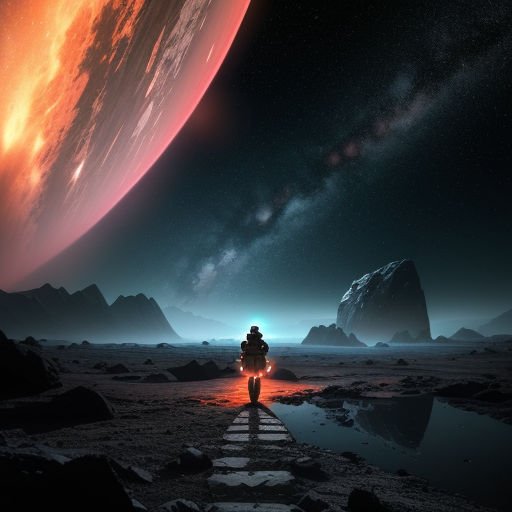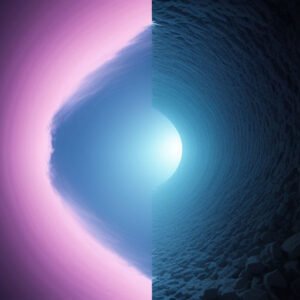When Science Gets Spooky Watch Out for These Bio-Experiment Nightmares
The Chilling World of Bio-Experiments in “The Thing”
Few sci-fi horror films have imprinted themselves on popular culture as indelibly as John Carpenter’s 1982 masterpiece, “The Thing.” At its core, the movie explores the terrifying consequences of bio-experiments gone awry in an isolated Antarctic research station. This setting acts as a crucible for paranoia, mistrust, and a visceral exploration of what happens when life—and identity itself—becomes fluid and unknowable. Bio-experiments serve not only as a narrative backbone but also as a haunting metaphor for the dangers of unchecked scientific curiosity.
How Bio-Experiments Shape the Narrative and Atmosphere
Carpenter’s film succeeds in part because it builds a claustrophobic environment where the threat isn’t merely external but infects the very fabric of the community. The bio-experiment angle deepens this underlying tension.
The Unfolding of the Alien Life Form’s Origins
The Thing isn’t just an alien monster—it’s a shape-shifting organism capable of integrating and imitating any living being perfectly. Though the movie never explains the origin of the creature in extreme detail, it implies an extraterrestrial bio-experiment of a highly advanced nature, detained or isolated long before human discovery.
– The alien’s assimilation process suggests biological mechanisms far beyond human understanding.
– It raises philosophical questions: can identity be maintained when physical form is erased and recreated?
– This blurring of boundaries makes the creature a perfect subject of bio-experiment horror.
Scientific Curiosity Turned Catastrophic
The Antarctic research station symbolizes human scientific endeavor—seeking truth in the coldest, most desolate place on Earth. The bio-experiment theme magnifies the horror by showcasing:
– The hubris of scientists who believe they can control or study such an organism.
– How the quest for knowledge can lead directly to destruction.
– The film acting as a cautionary tale about the limits of human control over powerful biological forces.
The Groundbreaking Special Effects That Gave Life to Bio-Experiments
A significant part of the film’s lasting impact comes from its practical special effects, which brought bizarre bio-experiments to terrifying life in ways that still resonate today.
Rob Bottin’s Revolutionary Creature Designs
Rob Bottin, the special effects wizard behind the grotesque transformations, pushed the boundaries by creating physical representations of the alien’s bio-experiments:
– The creature morphs through stages—from humanoid shapes to indescribably bizarre amalgamations of flesh and mechanical parts.
– Techniques included animatronics, puppetry, and makeup that emphasized organic, visceral horror.
– The effects pushed audiences out of their comfort zones, making the alien’s bio-experiments unnervingly believable.
How Practical Effects Enhance the Suspense
Unlike CGI, which wasn’t available or sophisticated in 1982, these tactile effects required actors to interact directly with the creatures.
– This interplay added authenticity and tension.
– The grotesque bio-experiments evoke a body horror that CGI might render but not fully replicate.
– The physicality of the creature makes the horror feel immediate and tangible, reinforcing the theme of uncontrollable biological mutation.
Mistrust and Paranoia Fueled by Bio-Experiments
One of the most powerful dimensions of “The Thing” is how the bio-experiment theme erodes trust among the humans trapped in the station.
The Alien’s Perfect Imitation Sparks Fear
Since the creature absorbs and perfectly mimics its host, every individual is a potential monster in hiding.
– This makes it impossible for any character—or the audience—to establish surety about who is human.
– The paranoia leads to intense psychological horror, arguably more terrifying than the physical threats.
– The uncertainty defines the film’s mood and narrative structure.
The “Who’s Infected?” Game and Its Psychological Toll
The crew’s attempts to identify infected members mimic the dynamics of a high-stakes bio-experiment on human psychology:
– Quick decisions, suspicion, and isolation fracture group cohesion.
– The escalating stress mirrors real-world issues in biohazard containment and emergency response.
– Bio-experiments here are not just biological but social and psychological, emphasizing the ripple effects of contamination.
Real-Life Scientific Inspirations Behind the Movie’s Bio-Experiments
The frightful bio-experiments in “The Thing” didn’t emerge from pure imagination—they have roots in actual scientific inquiries and biological phenomena.
Parasitism and Mimicry in Nature
Biologists have long studied organisms that imitate others for survival, such as:
– Parasitic wasps that manipulate hosts’ behavior.
– The mimic octopus, which changes shape and color to resemble other sea creatures.
– The concept of cellular mimicry—where organisms evolve to blend in with their environment or hosts—directly informed the creature’s bio-experiment characteristics.
Scientific Hazards and Ethical Concerns
“The Thing” indirectly highlights issues central to bio-experiments in science:
– Containment failures in laboratories can unleash pathogens (e.g., historical lab accidents with anthrax or smallpox).
– Gene-editing technologies today rekindle fears over uncontrolled bio-experiments affecting ecosystems or human health.
– The movie’s lasting relevance stems from these ongoing ethical debates about scientific responsibility.
The Thing’s Legacy: Why Bio-Experiments Continue to Captivate Sci-Fi Horror Fans
Decades after its release, the movie remains a shining example of how integrating bio-experiments into a horror narrative both terrifies and provokes deep reflection.
Influence on Other Media
Countless films, games, and books have drawn inspiration from its portrayal of bio-experiments:
– Video games like “Dead Space” and “Resident Evil” echo similar themes of mutated organisms and containment breaches.
– TV series exploring genetic modification and viral outbreaks owe a debt to the paranoid atmospheres crafted in “The Thing.”
– The film’s bio-experiments introduced a blueprint for combining science fiction with visceral horror.
Ongoing Scientific and Cultural Curiosity
Audiences are fascinated by bio-experiments because they tap into primal fears and cutting-edge science simultaneously.
– The ambiguity around where humanity ends and biology begins sparks endless speculation.
– This makes “The Thing” not just an entertaining film but a cultural touchstone for discussions on bioethics, identity, and survival.
– Fans and scholars alike continue to analyze the movie’s rich subtexts, keeping its legacy alive.
Exploring the Unseen Bio-Experiments: Behind-the-Scenes Insights
Beyond the screen, the making of “The Thing” involved bio-experiment-like creativity and problem-solving that reflected the film’s themes.
Challenges in Creating Organic Horror
– Special effects teams conducted innovative experiments using real animal parts combined with synthetic materials to create unsettlingly realistic props.
– Scenes were shot in freezing conditions to replicate Antarctic environments, adding authenticity.
– The actors’ improvisational responses to the unpredictable, “living” creature suits echoed the film’s themes of uncertainty and survival.
Trivia: What You Might Not Know
– The film’s original ending was re-shot after test audiences had trouble interpreting it, demonstrating how perceptions of bio-experiments’ horror can vary.
– Composer Ennio Morricone’s eerie score blends synth with orchestral elements, evoking the cold, clinical feeling often associated with scientific laboratories conducting bio-experiments.
– The virus-like nature of the alien inspired later viral outbreak films and current-day biohazard narratives, showing how potent this theme remains.
Summing Up the Essence of Bio-Experiments in “The Thing”
At its heart, “The Thing” uses the concept of bio-experiments to drive a multi-layered story of terror that transcends mere alien invasion. The film skillfully combines groundbreaking practical effects with an intelligent exploration of identity, trust, and the unknown frontiers of biological science. Its influence extends beyond its genre, continuing to inspire discussions about the ethical boundaries of scientific exploration and the fragile nature of humanity itself.
If you’re intrigued by the intertwining of sci-fi horror and bio-experiments, revisiting “The Thing” offers a masterclass in storytelling that challenges what it means to be human—and what horrors lurk when science meddles with life at its most fundamental level.
Dive deeper into the science and history of such bio-experiment themes by exploring comprehensive resources like those found at [National Geographic’s biology section](https://www.nationalgeographic.com/science/article/biology). Understanding the real science behind the fiction only adds to the chilling appeal of Carpenter’s classic.
Ready to confront the unknown and explore the dark intersections of science fiction and horror? Watch “The Thing” and experience how bio-experiments can flip the script on survival, trust, and humanity itself.














Post Comment